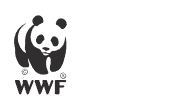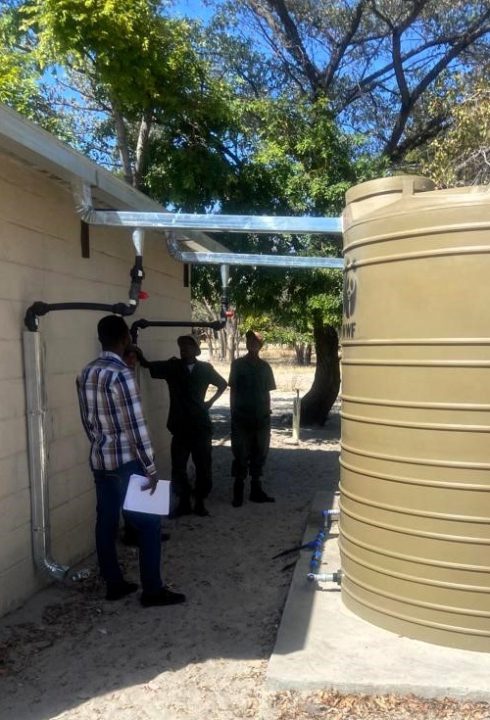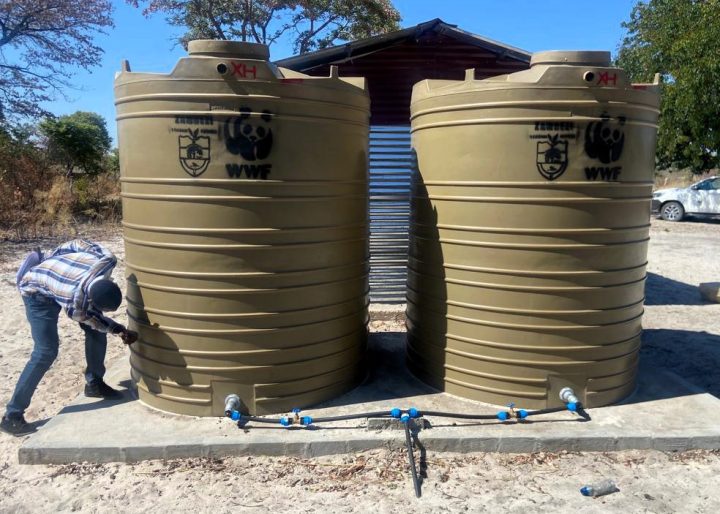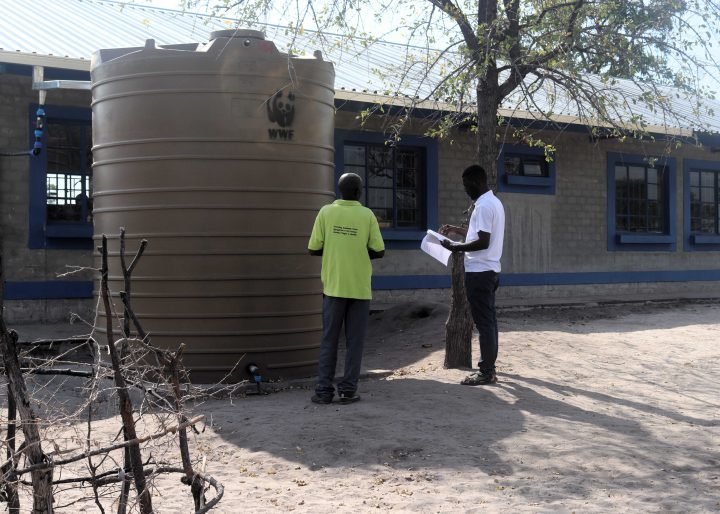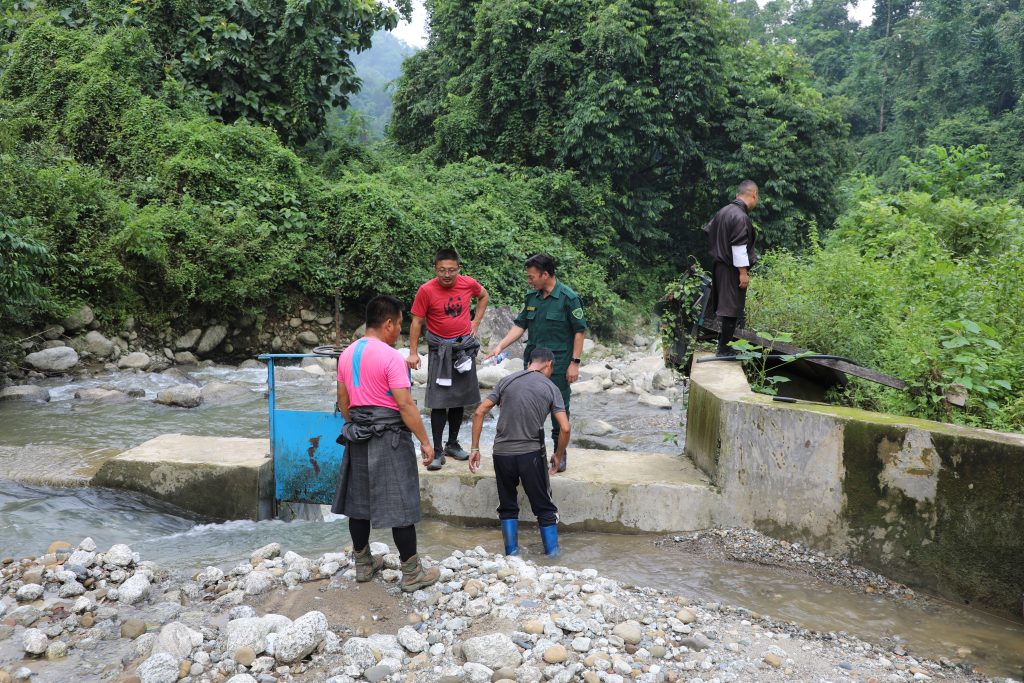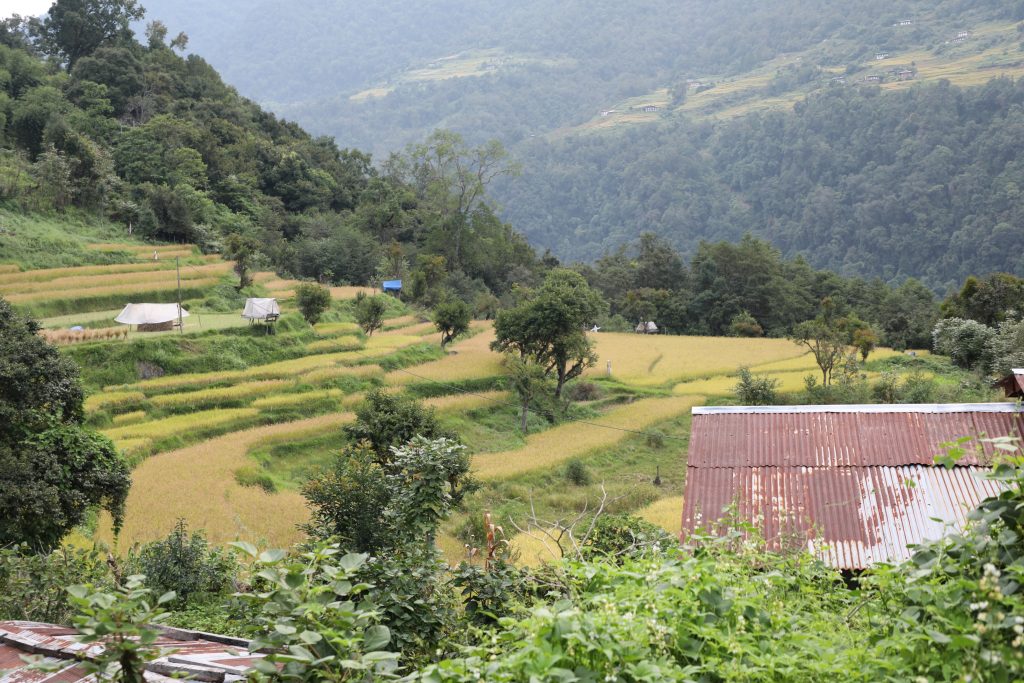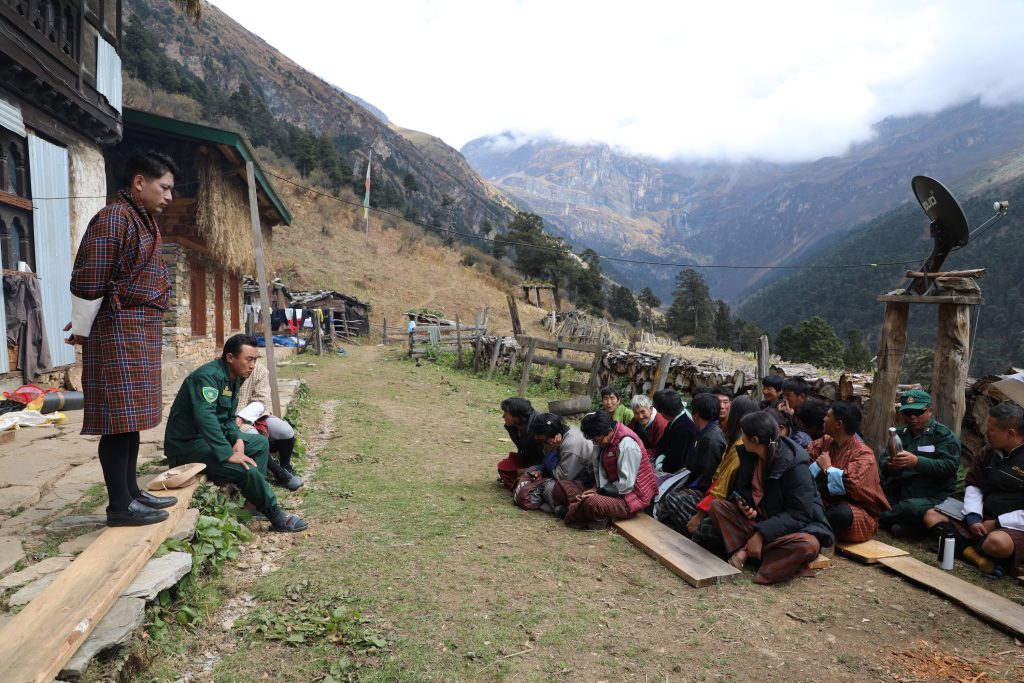Purpose
Improve water access and supply for 6 schools, 2 traditional courts, and 1 community association for 5 communities in the Zambezi region of Namibia.
Climate Impacts
The Omega 3, Luitcikxom, Zilitene, Machita, and Muyako communities reported the following impacts:
• Loss of water source
• Increased human-wildlife conflict as both compete for the same resources
• Crop failure due to insufficient rainfall and water scarcity
• Poor livestock health
• Impacts to human health
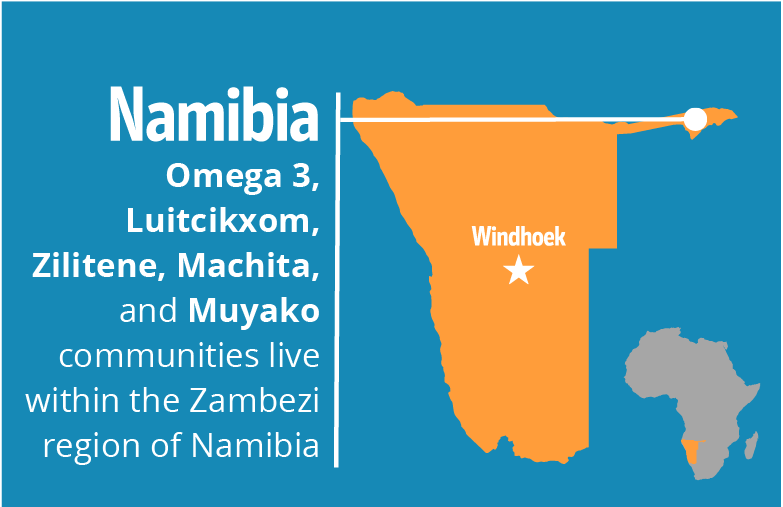
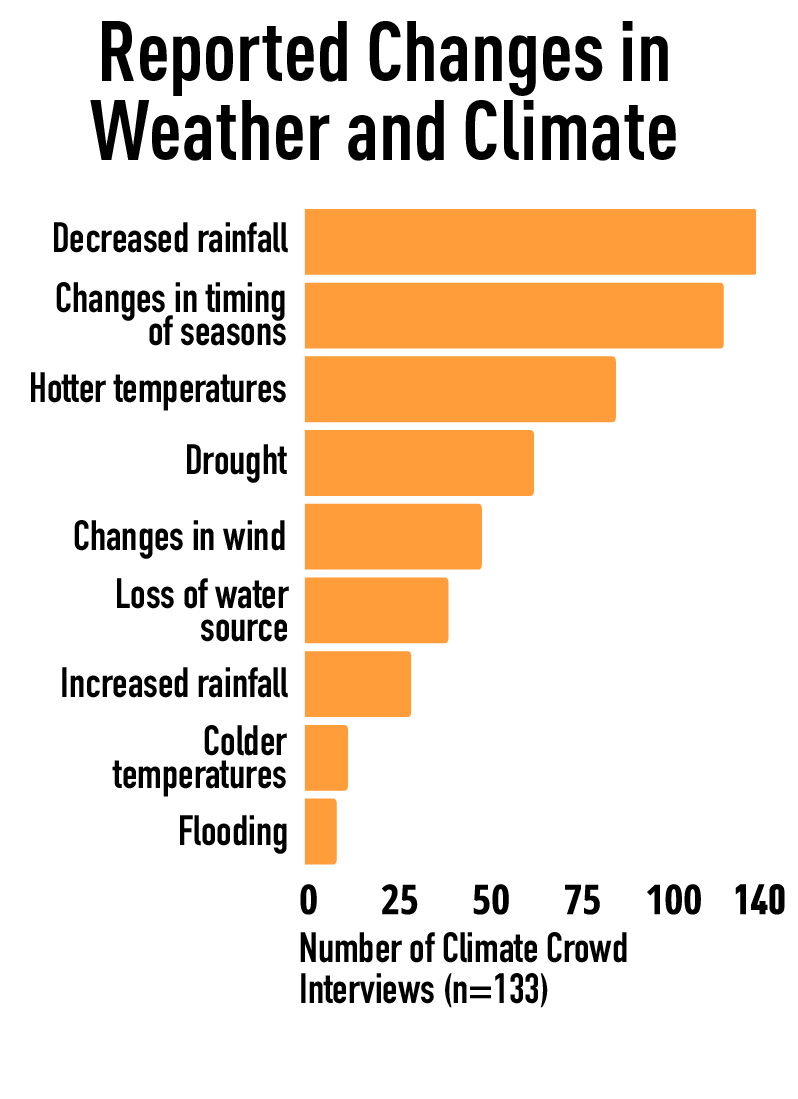
Activities
Identification of Sites
Buildings with angled aluminum-sheet roofing were selected to install the rainwater harvesting tanks.
Installation of rainwater harvesting systems
A local contractor installed the water stands, tanks, and gutters in the identified sites.
Roof cleaning
The roofs of each site are regularly cleaned during and after the dry season (March through September), ensuring the roof is clean when the rainy season starts.
Water collection
The harvested rainwater is collected and used for domestic and agricultural purposes throughout the rainy season and into the dry season.
Project monitoring
Monthly field visits are conducted to measure the project’s impact and ensure everything is working properly.
project outcomes
project design
As one of the most arid nations in Southern Africa, Namibia has long battled against water scarcity. To cope with prevalent drought and lack of rainfall, rooftop rainwater harvesting systems were installed in five communities in the Zambezi region of Namibia in partnership with the Ministry of Education, Arts, and Culture and the Ministry of Works and Transport. During the rainy season, these rainwater harvesting systems will have the capacity to collect up to 10,000 liters of rainwater per system, greatly increasing the communities’ water availability. In some of the locations, the roofs were too short for the gutter to reach the inlet of the 10,000 liter tank, so in those sites, two shorter 5,000 liter tanks were installed instead.
The collected water is primarily intended to be used for household and agricultural purposes, benefiting farmers’ livelihoods as crops and livestock will be more productive. By placing the water tanks in frequently populated locations like schools, traditional courts, and community associations, the overall distance and time spent trekking to the closest rivers and lakes has been reduced, as well as reduced interaction with wild animals which also use those water sources.
